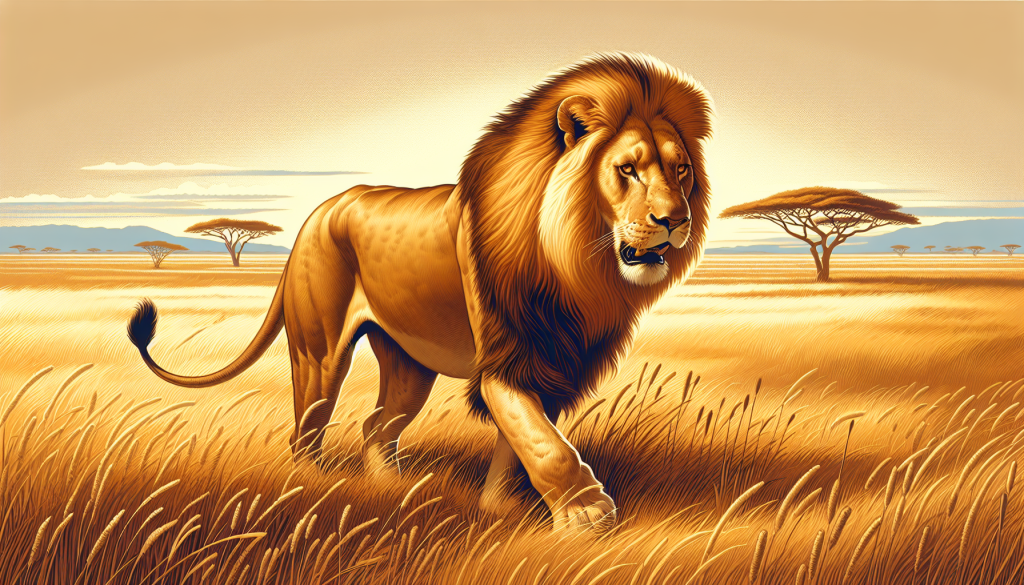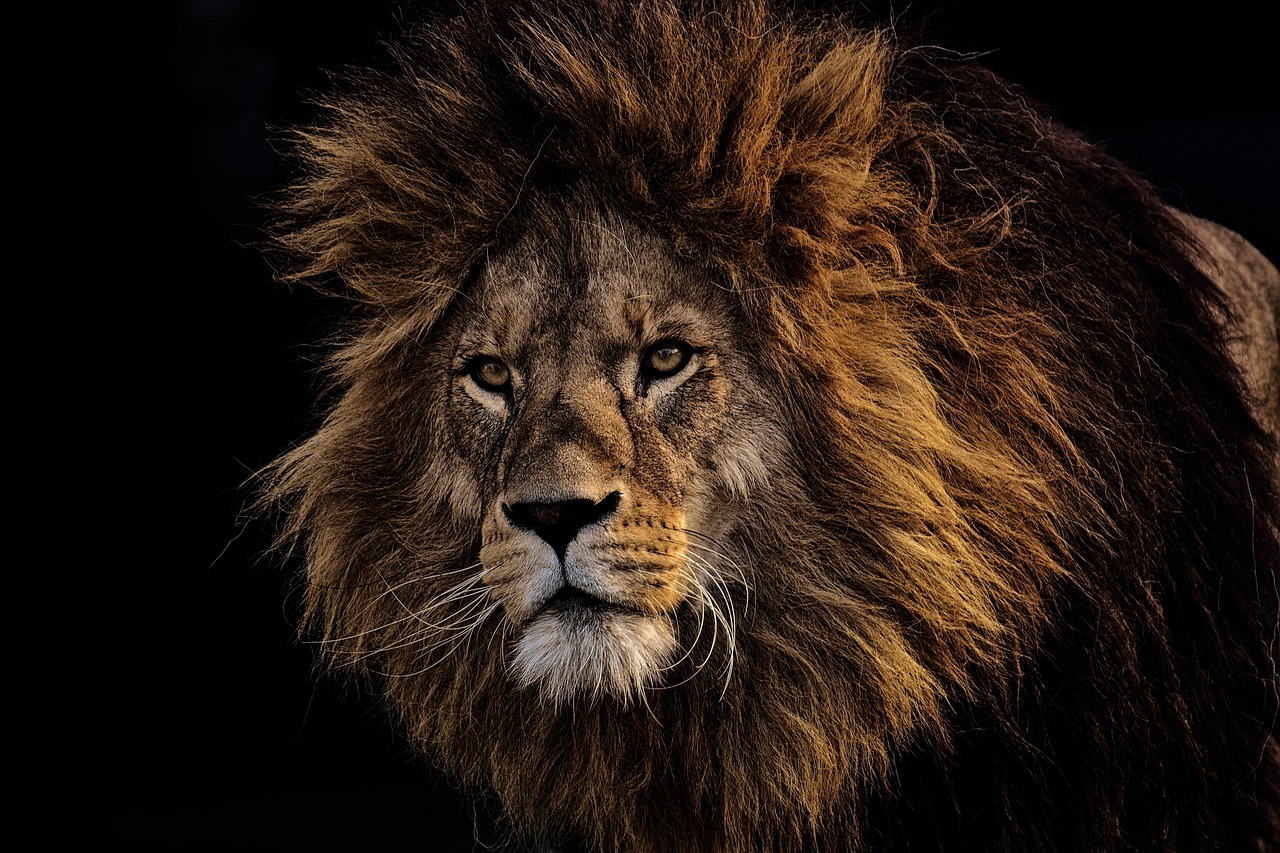In this article, we will explore the fascinating topic of how lions have managed to adapt to their environments. Lions, known as the kings of the animal kingdom, have unique characteristics and adaptations that enable them to thrive in their diverse habitats. From their powerful bodies to their sharp senses, we will delve into the various ways these magnificent creatures have successfully adapted to their surroundings. So, let’s take a closer look at the secrets behind the lion’s incredible ability to survive and prosper in their ever-changing environments.
Physical Characteristics
Size and Weight
Lions are known for their impressive size and strength. Adult males can reach lengths of up to 10 feet, including their tails, and can weigh between 330 to 500 pounds. On the other hand, adult females are slightly smaller, measuring around 9 feet in length and weighing between 265 to 395 pounds. These large dimensions make lions one of the biggest cats in the world, second only to the tiger.
Muscular Structure
Lions have a well-developed muscular structure, enabling them to conquer their environments. Their strong forelimbs and shoulders provide the power needed for activities like tackling prey and defending themselves against potential threats. Additionally, their powerful hind limbs allow them to sprint at remarkable speeds, reaching a top speed of 50 miles per hour in short bursts.
Coat and Coloration
The coat of a lion is another physical characteristic that aids in its survival. Adult lions typically have a short, sandy-colored coat that helps them blend in with their surroundings. This coloration is beneficial for camouflaging in the grasslands and savannahs where they predominantly reside. Furthermore, male lions possess a prominent mane around their neck and head, which not only serves as a majestic feature but also provides some protection during territorial disputes.
Habitat and Range
Savannahs
Lions are primarily found in savannah habitats, characterized by vast open grasslands interspersed with scattered trees and shrubs. These habitats offer a perfect balance of open spaces for hunting and dense vegetation for concealment and protection. The flat terrain of the savannahs allows lions to spot prey from a distance and utilize their speed and agility to capture it successfully.
Grasslands
Similar to savannahs, grasslands act as an important habitat for lions, especially in areas where the vegetation is shorter and more uniform. These grassland habitats are usually rich in herbivorous prey species, providing lions with a consistent food source. The open nature of grasslands also facilitates group hunting strategies, as there are fewer places for prey to hide or seek refuge.
Woodlands
Although lions are most commonly associated with open plains, they can also adapt to woodland habitats. These habitats provide lions with greater cover and shade, allowing them to avoid harsh sunlight and seek refuge during hot weather. Woodlands often offer a diverse range of prey species, including small mammals, ungulates, and even larger herbivores, making it a viable hunting ground for lions.
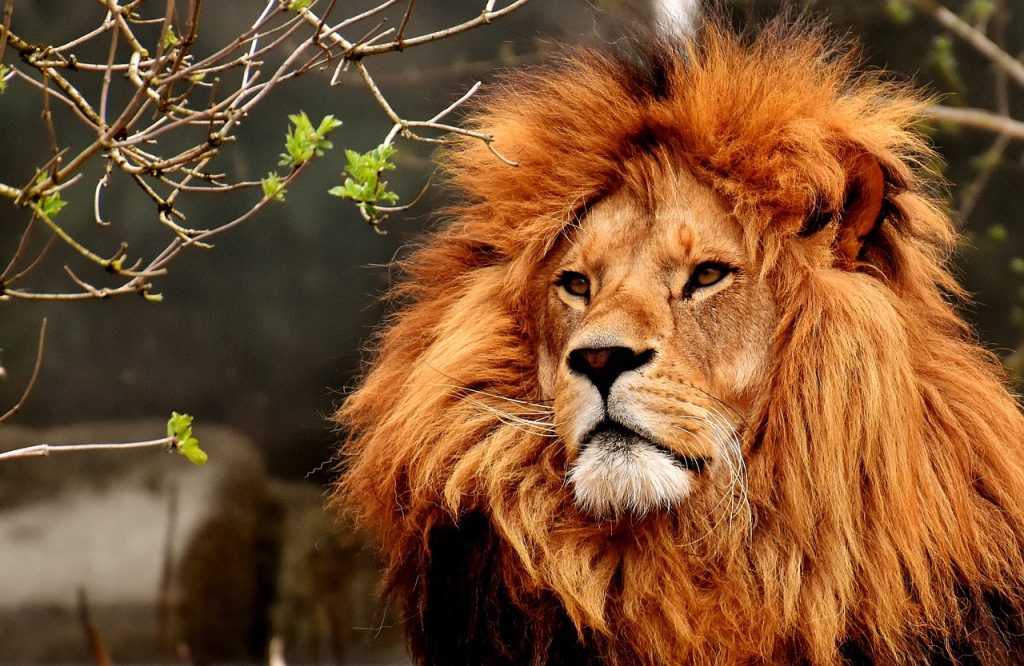
Diet and Hunting
Carnivorous Diet
Lions are apex predators and have a strictly carnivorous diet. They primarily prey on large ungulates, such as zebras, wildebeests, and buffalo. However, they are also known to hunt smaller mammals like hares and rodents when larger prey is scarce. Lions are opportunistic hunters and will scavenge the kills of other predators when the opportunity arises.
Hunting Techniques
Lions employ various hunting techniques to secure their meals. One common strategy is stalking, where they silently approach their prey, utilizing their excellent camouflage and stealth to get as close as possible for a surprise attack. Lions also utilize their keen senses of hearing and sight to detect vulnerable prey. They often take advantage of cover, such as tall grass or woodland foliage, to get within striking range without being noticed.
Group Hunting
One of the most remarkable aspects of lion behavior is their ability to hunt cooperatively in groups called prides. This social structure allows for more successful and efficient hunts. By working together, lionesses can surround and ambush their prey, using a combination of coordinated movements and effective communication. Group hunting enables lions to take down larger and more formidable prey that would be difficult to catch individually.
Social Structure
Pride Structure
Lions have a hierarchical social structure, with the pride being the fundamental unit. A pride typically consists of related females, their offspring, and a few unrelated adult males. The pride is a stable group that usually remains together for several years, with the females forming strong bonds and cooperation for hunting and raising young.
Hierarchy and Dominance
Within a pride, there is a social hierarchy that determines access to resources and mating opportunities. Adult males, known as “coalitions,” establish dominance within the pride by competing with other males. The dominant males have the privilege of mating with the lionesses and protecting the pride from intruders. Females, in turn, have a more cooperative and egalitarian social structure, with dominance being based on age and experience.
Territorial Defense
Lions are highly territorial animals, and territorial defense is a crucial aspect of their social structure. Male lions actively defend their territory, marking it with scent and vocalizations, and repel any intruding males that pose a threat to their dominance. Territorial disputes between prides can be fierce and result in intense battles, with roaring and physical confrontations being common.

Reproduction and Parenting
Mating and Courtship
Lions have a polygamous mating system, where dominant males mate with multiple females within their territory. During courtship, males display their strength and fitness through roaring, scent marking, and physical dominance over competing males. The courtship period often involves mutual grooming and nuzzling between mating pairs, strengthening the bond between males and females.
Gestation and Birth
The gestation period for lions typically lasts around 105 to 110 days. After successfully mating, lionesses will find a secluded den within the pride’s territory to give birth. The average litter size ranges from one to six cubs, with two to four being the most common. Cubs are born blind and are entirely dependent on their mother for nourishment and protection.
Parental Care
Lion cubs are raised collectively by the entire pride, with the females playing a significant role in their upbringing. Lionesses provide milk for the cubs and teach them essential hunting and survival skills. While lionesses are responsible for the majority of hunting, male lions also participate in providing protection and defending the pride from potential threats.
Senses and Communication
Vision and Hearing
Lions possess sharp vision and strong hearing, which are well-suited for their hunting lifestyle. Their eyes are adapted to low light conditions, making them exceptional night hunters. Lions also have excellent hearing, allowing them to detect the sounds made by potential prey or rival individuals from a considerable distance, even in dense vegetation.
Scent Marking
Scent marking plays a vital role in lion communication. Lions have scent glands on their paws, cheeks, and anal regions, which they use to deposit their unique scent on rocks, trees, and other prominent objects within their territory. These scent marks serve as territorial boundaries and communicate important information about reproductive status and dominance to other lions.
Vocalizations
The deep, resonant roar of a lion is one of the most iconic sounds of the African wilderness. Roaring serves multiple purposes for lions, including territorial advertisement, communication within the pride, and intimidation of rivals. Lions also communicate through other vocalizations such as growls, grunts, and moans, which convey different messages and moods to other pride members.
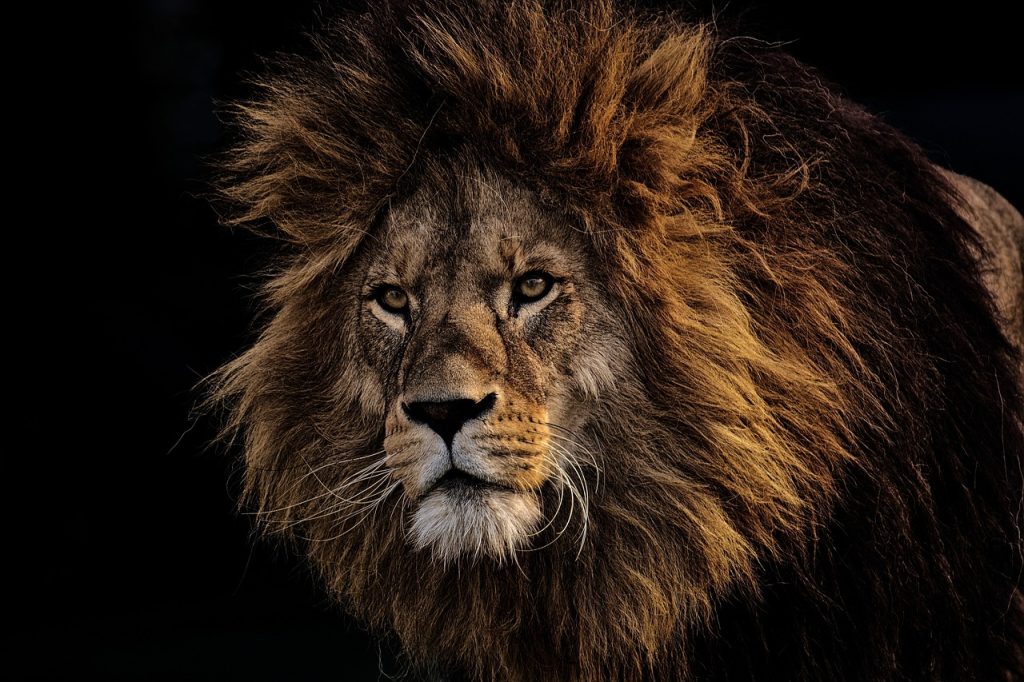
Adaptations for Survival
Camouflage and Concealment
The sandy-colored coat of a lion provides effective camouflage in the grasslands and savannahs where they reside. The short hair and coloration allow lions to blend into the environment, making it easier for them to ambush prey without being detected. This adaptation enhances their chances of a successful hunt.
Speed and Agility
Lions are not only powerful but also surprisingly agile creatures. Their muscular build and long hind legs allow them to reach remarkable speeds in short bursts, making them formidable predators. This speed and agility are crucial for chasing down and capturing fast-running prey such as gazelles and wildebeests.
Powerful Jaws and Teeth
Lions possess a formidable set of jaws and teeth, perfectly adapted for their carnivorous lifestyle. Their strong jaws and sharp teeth allow them to take down and bring down large prey, capable of crushing bones and tearing through tough hides. These powerful biting and killing tools ensure that lions can efficiently dispatch their prey.
Environmental Threats
Habitat Loss
One of the significant environmental threats faced by lions is habitat loss. Rapid human population growth, urban expansion, and agricultural development have resulted in the loss and fragmentation of lion habitats. As their natural ranges continue to shrink, lions are forced into closer proximity with human settlements, leading to increased conflict and a decrease in suitable hunting grounds.
Poaching
Poaching poses a severe threat to lions, primarily due to the illegal trade in lion bones and body parts. Lions are often poached for their bones, which are used in traditional medicine and sold on the black market. The demand for lion trophies and skins also contributes to lion poaching, further endangering their populations.
Human-Wildlife Conflict
As human populations continue to expand, conflicts between lions and local communities become more frequent. Livestock predation by lions can have devastating effects on the livelihoods of communities, leading to retaliatory killings and overall negative attitudes towards lion conservation. Furthermore, lion-human encounters can endanger human lives, putting both lions and people at risk.
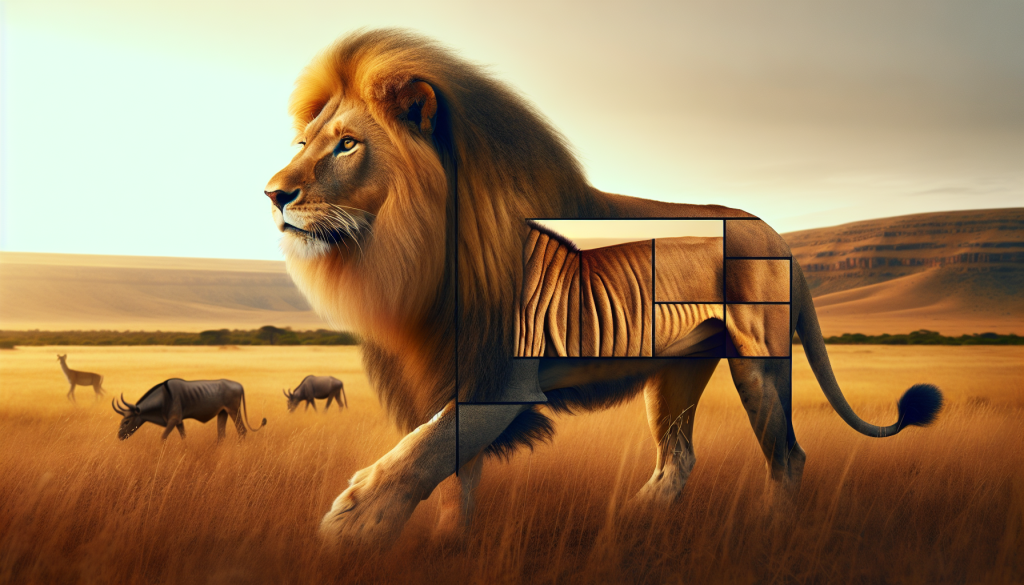
Conservation Efforts
Protected Areas
The establishment of protected areas has played a vital role in lion conservation. National parks, wildlife reserves, and conservation areas provide significant habitat protection for lions and other wildlife. These protected areas help safeguard lion populations by minimizing habitat loss, controlling human activities, and providing suitable environments for their survival.
Anti-Poaching Measures
Effective anti-poaching measures are crucial for the conservation of lions. Enhanced law enforcement efforts, such as anti-poaching patrols, the deployment of trained rangers, and collaboration with local communities, help detect and deter poaching activities. Strengthening penalties for wildlife crimes and raising awareness about the importance of lion conservation are also vital components of anti-poaching efforts.
Community Involvement
Engaging local communities in lion conservation initiatives is essential for long-term success. By involving communities in decision-making processes, providing alternative livelihood options, and educating people about the importance of coexistence with lions, conservation organizations can foster a sense of ownership and stewardship towards lions. This community involvement not only benefits lion populations but also promotes sustainable development and enhances the well-being of local communities.
Interactions with Other Species
Prey-Predator Dynamics
Lions play a crucial role in maintaining the balance of prey-predator dynamics in their ecosystems. By controlling herbivore populations, lions help prevent overgrazing and maintain a healthy balance within the food chain. The presence of lions also influences the behavior and distribution of prey species, creating a domino effect that cascades throughout the ecosystem.
Scavengers and Competitors
Lions are not the only creatures that benefit from their hunting efforts. Scavengers such as hyenas, vultures, and jackals rely on lion kills for a significant portion of their diet. Lions often leave behind remnants of their kills, providing valuable food for these scavengers. However, lions also face competition from other predators, such as leopards and cheetahs, for both territory and prey.
Impact on Ecosystems
The presence of lions has a profound impact on the ecosystems they inhabit. Through their hunting activities, lions regulate herbivore populations and prevent overconsumption of vegetation. This, in turn, promotes the health of grasslands and savannahs, leading to increased biodiversity. The ecological role of lions extends far beyond their immediate environment, affecting the overall balance and stability of entire ecosystems.
In conclusion, lions have evolved impressive physical adaptations, such as their size, muscular structure, and coat coloration, to excel in their habitats. Their social structure, hunting techniques, and cooperative behaviors enable them to thrive as apex predators. However, lions face various environmental threats, including habitat loss, poaching, and human-wildlife conflict. Conservation efforts, such as the establishment of protected areas, anti-poaching measures, and community involvement, are essential for ensuring the survival of these magnificent creatures. By understanding and appreciating the complexities of lion adaptations and their interactions with other species, we can contribute to their long-term conservation and the preservation of our planet’s biodiversity.
